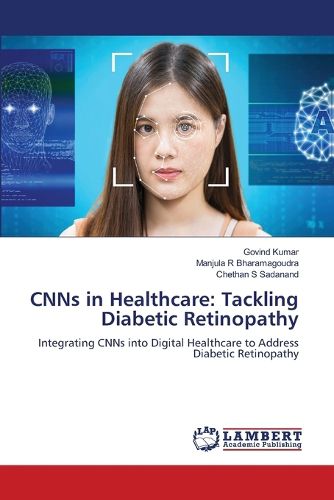Readings Newsletter
Become a Readings Member to make your shopping experience even easier.
Sign in or sign up for free!
You’re not far away from qualifying for FREE standard shipping within Australia
You’ve qualified for FREE standard shipping within Australia
The cart is loading…






Diabetic retinopathy is a leading cause of vision impairment and blindness worldwide, affecting millions annually. Arising from prolonged hyperglycaemia, it damages the retina's blood vessels, leading to retinal ischaemia, microaneurysms, and haemorrhages, which may result in vision loss or blindness. In 2020, 103.12 million adults globally were affected by DR, with projections reaching 160.50 million by 2045. Timely detection is crucial for preventing vision loss and improving quality of life, while also reducing the societal burden of blindness. The rise of deep learning, particularly convolutional neural networks (CNNs), has revolutionized automated DR detection, offering a promising path for early intervention. Technologies such as fundus photography, optical coherence tomography (OCT), and AI-driven screening systems complement these advancements. This project proposes a Health Monitoring System that uses CNNs to automate DR detection and grading. By incorporating personalized patient data, the system enhances diagnostic accuracy and provides tailored recommendations to patients and doctors. This personalized approach aims to prevent vision loss and improve patient outcome.
$9.00 standard shipping within Australia
FREE standard shipping within Australia for orders over $100.00
Express & International shipping calculated at checkout
Diabetic retinopathy is a leading cause of vision impairment and blindness worldwide, affecting millions annually. Arising from prolonged hyperglycaemia, it damages the retina's blood vessels, leading to retinal ischaemia, microaneurysms, and haemorrhages, which may result in vision loss or blindness. In 2020, 103.12 million adults globally were affected by DR, with projections reaching 160.50 million by 2045. Timely detection is crucial for preventing vision loss and improving quality of life, while also reducing the societal burden of blindness. The rise of deep learning, particularly convolutional neural networks (CNNs), has revolutionized automated DR detection, offering a promising path for early intervention. Technologies such as fundus photography, optical coherence tomography (OCT), and AI-driven screening systems complement these advancements. This project proposes a Health Monitoring System that uses CNNs to automate DR detection and grading. By incorporating personalized patient data, the system enhances diagnostic accuracy and provides tailored recommendations to patients and doctors. This personalized approach aims to prevent vision loss and improve patient outcome.